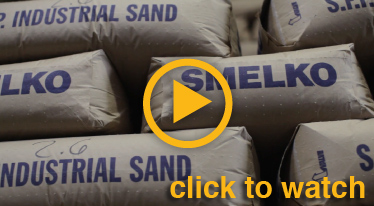Glass Beads
Ballotini® Impact Beads
There can be no doubt that Glass Beads are the world’s most popular air blasting media for cleaning and conditioning surfaces. The unique characteristic of glass sphere blasting is that surfaces are cleaned, deburred, decorated and “cold-worked”, without etching or removal of basic surface material and without imparting ferrous or other undesirable residues. In addition , the inherent strength of a glass sphere is such that it can survive multiple impacts, allowing for economies of continuous recycling. Consumption, or breakage of beads, averages only about 3% per cycle.
Glass Bead Impact Media
• are consumed at a slow rate and can survive multiple impacts, allowing for continuous recycling of the media.
• are chemically inert and will not leave ferrous or other undesirable residues on the surface of the workpiece
• impart a controlled, clean finish on a variety of metals
• clean quickly without significant metal removal
Typical Applications for Glass Bead Blasting
• cleans and preps the surface of metal parts without changing tolerances , or imparting ferrous pollutants
• combined cleaning, finishing and peening in one operation
• creates a wide range of unique surface finishes that are easy to reproduce
• blends machine marks, seals pores and the results offer the advantages of glass bead peening
Peening
• reduces the tensile stress in metal parts, increasing the fatigue limit
• reduces stress corrosion cracking
Deburring
• removes burrs without damaging the parts and offers a peened surface in one operation
• remove larger, tougher soils
• fewer impacts per pound
• clean slower
• peen to more intense levels
• can’t reach small areas
• produce higher surface surface RMS or AA
• peen to deeper zones in surfaces
• reclaim/seperation easy, up to one or two mm
• consume faster at same pressure as small beads ( in practice may consume slower than small beads, as less pressure is required to accomplish work )
• as large as 4 mm in diameter
Small Beads
• remove smaller, lighter soils
• more impacts per pound
• clean faster
• peen to less intense levels
• reach into keyways, fillets, small areas
• Produce lower surface RMS or AA
• peen outerzones of surfaces
• reclaim/separation easy, with care below 44 microns
• produce more matte finish at same intensities as larger beads
• consume slower at same pressure as large beads ( in practice may consume faster than large beads, as more pressure is required to accomplish work )
• to 37 microns and finer diameter
All Beads
• peen to highest intensities at 90° nozzle angle
• consume greatest at 90° nozzle angle
• consume greater at highest blast pressures
• consume greater as workpiece hardness increases
• consume greater as nozzle approaches workpiece
• cleans less efficiently at 90° nozzle angle, due to narrowing of blast pattern area and ‘blinding’ by rebounding beads
• are inert, contain no free silica ( not a silicoses hazard like silica sand ) and are easily and safely disposed of
Factors affecting final surface appearance as well as consumption rate include: shape of workpiece, hardness of workpiece, bead size, angle of nozzle, distance of nozzle from surface, air pressure, and type of delivery system (suction vs. pressure blast)
• Size range – Minimum 80% by weight in range on smaller U.S. Sieve, Maximum of 10% by weight on larger U.S. Sieve. Tested in accordance with ASTM D 1214-58 and MIL Spec G-9954A
• Free Iron Content – Maximum 0.1% (one tenth of one percent) by weight
• Silica Content – Minimum 67% to assure chemical stability. Tested in accordance with ASTM #C 169-57T
• Specific Gravity – 2.45 – 2.55 gm/c³
• Hardness – DPH 50g load – 540kg/m²
• Colour – clear or crystal, free from surface films.
• Roundness – Minimum as listed for each size range specified. Determined in accordance with ASTM #1155 – 53 or MIL Spec. G9954A
• Broken or angular particles – maximum 3% by count. Tested in accordance with MIL Spec. G-9954A
• Air inclusions – not more than 10% of the beads shall show air inclusions of more than 25% of their area. Tested microscopically immersed in 1.5 refractive index fluid.
• Quality control lots – maximum size 2,000 pounds with lot numbers on each bag. Lot analysis records available upon request.
• Standard packaging – fifty pounds multi-wall paper bags with polyethylene barrier.
• Standard pallet – size 40″ x 40″ and contain 2,000 lbs.

